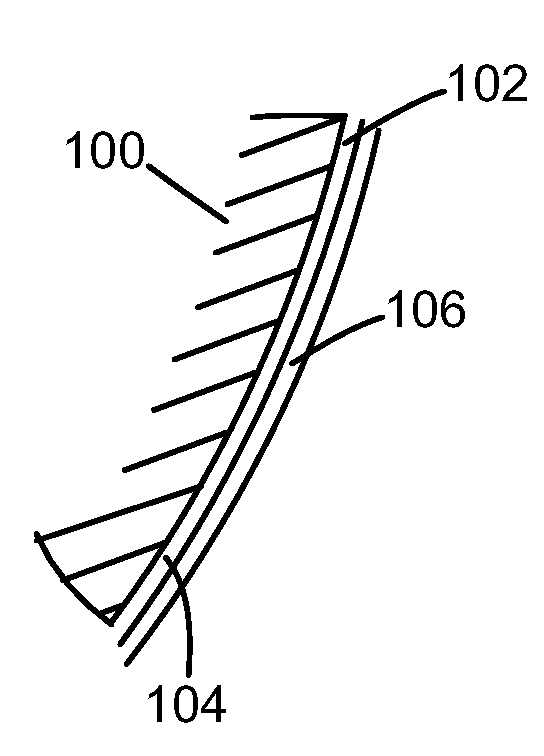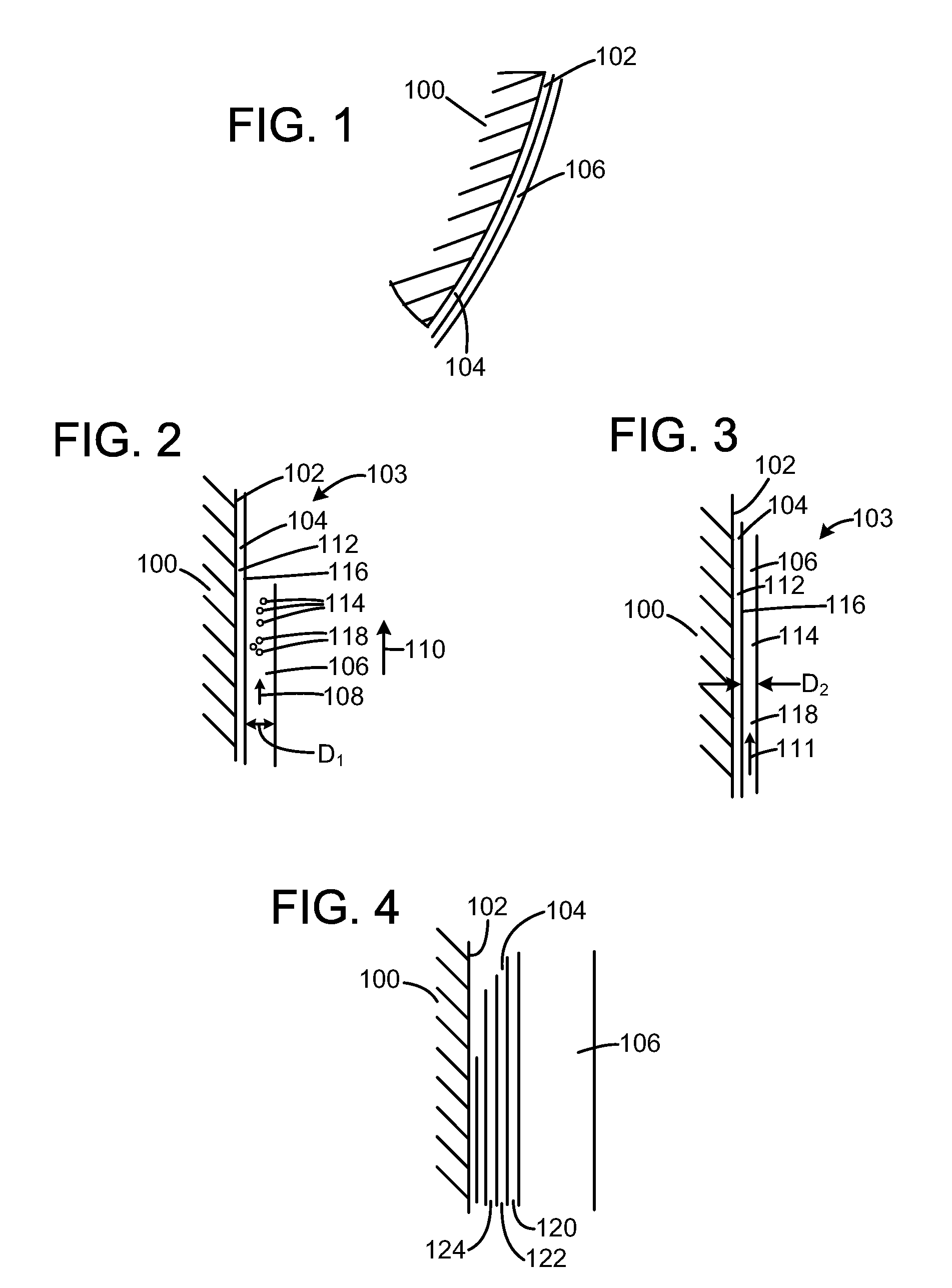Method of treating a marine object
a technology for marine objects and vehicles, applied in water cleaning, water treatment compounds, water/sludge/sewage treatment, etc., can solve the problems of low effect, low effect, and easy slipping of the paint layer, so as to reduce the number of organisms, reduce the tendency of organisms, and reduce the effect of environmental impa
- Summary
- Abstract
- Description
- Claims
- Application Information
AI Technical Summary
Benefits of technology
Problems solved by technology
Method used
Image
Examples
example
[0028]There was prepared a paint composition corresponding to model paint composition A, although the copper oxide was excluded and replaced with dry soy meal with a grain size of 0.01 mm. The paint was applied in a surface layer. Such a model paint composition A may include 98 percent solid substance volume of tri-isopropyl silyl acrylate, 2 percent solid substance volume of hydrogen substance / Disperbyk 164 (for example Byk Chemie, Germany), 2 percent solid substance volume, silica Aerosil 200 (for example Degussa, Germany), 2 percent solid substance volume, modified polyethylene wax, Aditix M60 X (for example Supercolori, Italy), 36 percent solid substance volume of soy flour. Solid substance volume ratio: 50; solvent xylene.
[0029]The paint was applied as an antifouling paint on a boat lying in Baltic Sea water. Once exposed to the water environment, the soy flour particles went through a biological decomposition process as the outer layer of paint consumed oxygen from the adjacen...
PUM
| Property | Measurement | Unit |
|---|---|---|
| particle size | aaaaa | aaaaa |
| particle size | aaaaa | aaaaa |
| time | aaaaa | aaaaa |
Abstract
Description
Claims
Application Information
 Login to View More
Login to View More - Generate Ideas
- Intellectual Property
- Life Sciences
- Materials
- Tech Scout
- Unparalleled Data Quality
- Higher Quality Content
- 60% Fewer Hallucinations
Browse by: Latest US Patents, China's latest patents, Technical Efficacy Thesaurus, Application Domain, Technology Topic, Popular Technical Reports.
© 2025 PatSnap. All rights reserved.Legal|Privacy policy|Modern Slavery Act Transparency Statement|Sitemap|About US| Contact US: help@patsnap.com



